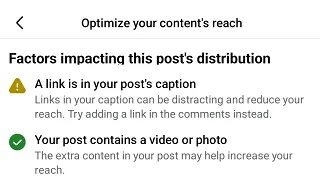⃛Level Up ↴
Apple is bringing in the big guns to power Siri: now with AI!
OpenAI and Jony Ive are thinking screen-free.
Google and Perplexity are powering assistants elsewhere.
Smart glasses are spilling from every nook and cranny.
As the ambient computing future draws nearer, what does your brand sound like?
Many decisions people make are part of a status game—whether explicit or implicit in the decision.
How does your brand and messaging fit into the status signaling of your ideal customer?
What’s the difference between this flop of an Apple commercial:
And this hit:
Story
A story that’s clear. That the viewer wants to see themselves in.
Story is sticky.
See also: Significant Objects
via Nudge
CTV CPMs are down.
Why?
more inventory, more buyers looking for performance and a growing appetite for efficiency over exclusivity.
Digital rewired adveristers’ expectations. There’s a large class of marketers (myself included) who have basically no traditional media buying experience.
To whom minimums and exclusivity and static runs just seem weird.
via Digiday
If your advertising works, what does it say about the group of people who respond to it?
This is why it should be brand + performance marketing.
Brand obsesses about message and alignment.
Performance about results.
Either one alone can focus on metrics to the detriment of long term goals.
Don’t obsess over getting attention.
Focus on earning it.
Remember when a big deal was made about Gen Z using Instagram and TikTok to search for places to eat? Well…
Gen Z consumers are starting their purchase journeys more often on Google…
But this isn’t a Google Search comeback story:
properties, including YouTube and Gemini
While Gen Z shoppers have moved away from Google Search as their primary method of discovery, those losses have been more than offset by YouTube’s growing importance as a channel for product discovery and research
The former search company is quickly becoming the YouTube company.
via EMARKETER
Early indications suggest that legacy SEO tactics —such as aggressive link building, keyword stuffing, or micro-optimization—will likely diminish in effectiveness. In their place, Google is prioritizing content that demonstrates topical authority, real-world expertise, and clear value to the end user
Your ad/post/content isn’t just competing with the other options around it in the feed.
It’s competing with what’s on the second (or third) screen.
With what’s happening in the viewer’s environment.
With the to-do and to-consume lists.
For marketers, it’s telling them that people are spending more time with their attention on other screens while they’re on the mobile devices.
A little harder to reach the consumer because their attention is divided.
Each individual piece of content is unlikely to be remembered over time. It’s the aggregate and l overall impression that matters.
via EMARKETER
“We’ve got a bunch of great C chords! There’s gonna be some E minors and some G’s! And some cymbal hits!”
That’s not a great way to sell an album. Information rarely sells art.
Information rarely sells most things.
Features and specs help make the final decision, when the consideration set has been narrowed down.
Emotional messaging is where the process starts.
People aren’t searching for a specific horsepower on their lawnmower. They’re searching for shorter grass with less effort.
They’re searching for a well maintained stage for memories.
_via Gabe the Bass Player
Silicon Valley has agreed, smart/XR glasses are the future.
The Goliaths are taking the iterative approach. Start with the minimum viable device and move towards optics. They want to own the platform.
Xreal is taking the opposite approach. Start with the optics and work back to platform status.
amid the race to automate, a critical truth is emerging: the brands making the most significant impact aren’t the fastest. They’re the most intentional. When everything is automated, meaning becomes the differentiator.
via MarTech
May was a rough month unless you could partake in the Memorial Day sale bonanza, based on my experience.
Consumer spending data backs this up, according to EMARKETER:
US retail sales fell more than expected in May from April, the latest sign that tariff fears and economic volatility are affecting consumer spending.
There are signs of resilience, but plenty of red flags 🚩
Consumer confidence remains well below what it was at the end of 2024, as concerns about the economy, employment, and finances remain elevated due to ongoing volatility and lack of clarity on tariffs.
Even high-income consumers are beginning to rethink their spending, with many choosing to trade down or pull back on discretionary categories like dining out and luxury goods
Amazon 🤝 Roku
Amazon Ads and Roku Announce Partnership Creating the Largest Authenticated CTV Footprint
Advertisers can now deliver on Roku surfaces via Amazon’s DSP.
This Exponential View episode is worth a listen as a quick overview of the current tech inflection points, like:
- the AI layer upending the current ad funded model of the “open” internet
- why we should approach AI model advancements with optimism
But this is the big one for me:
It”s no longer about phones. It’s about ambient computing.
Ambient, invisible computing
I started writing about this way back in 2020, this will be the biggest marketing shift of the era.
Apple’s liquid glass is the public facing beginning of this shift (for them).
Jasmine Enberg gets it:
people aren’t going to buy your product, tariffs or not, if they don’t know who you are
Building a brand is expensive in the short run and cheap in the long run
This SparkToro post that the messaging categories we emphasize to clients are really as old as Aristotle.
Pathos - Emotional
Ethos - Functional / Relational
Logos - Logical / Data-centric
You have to have all three and they get used at different times for different audiences.


